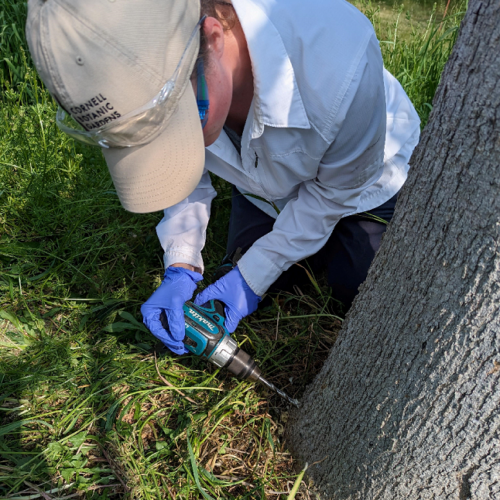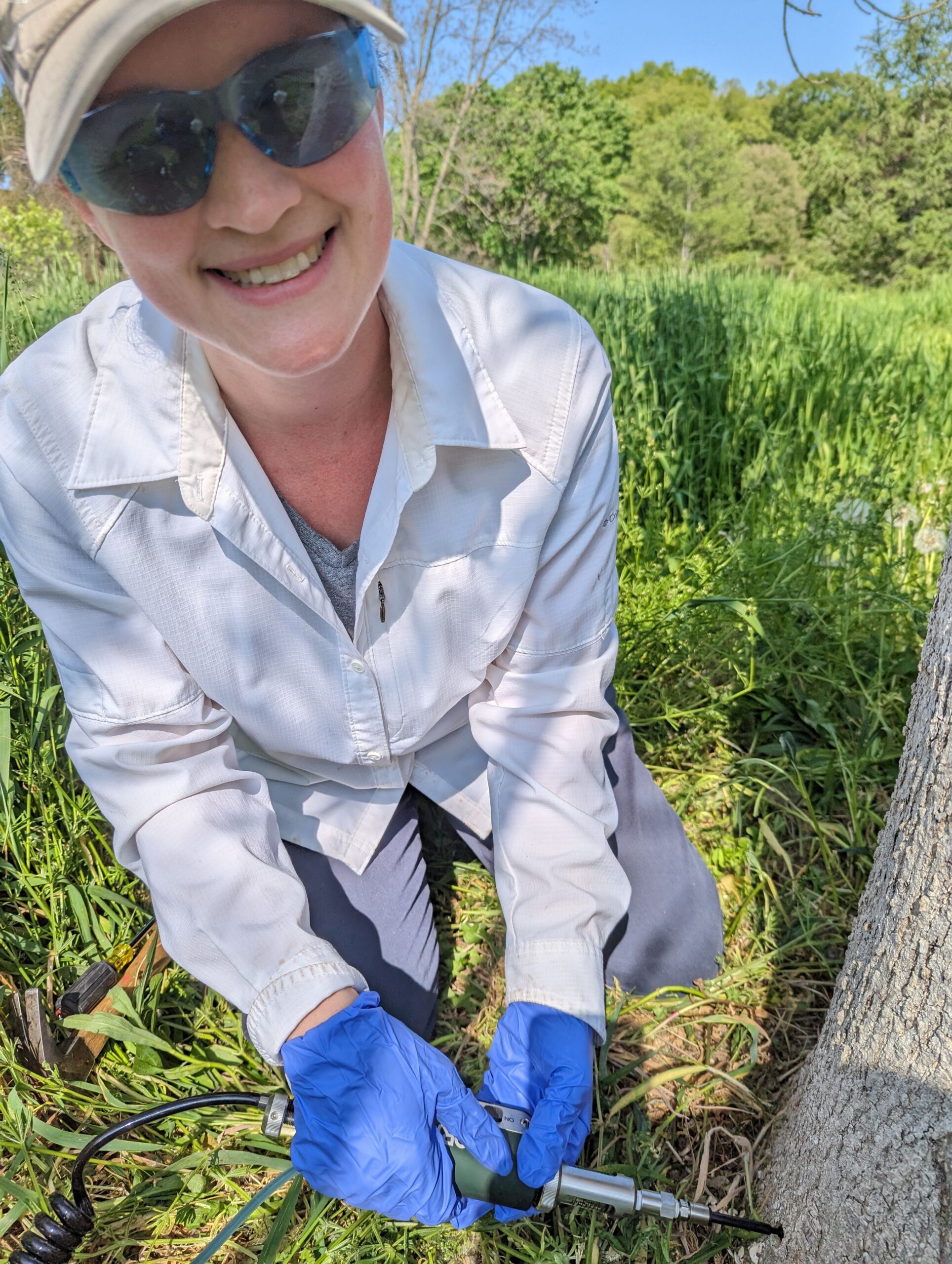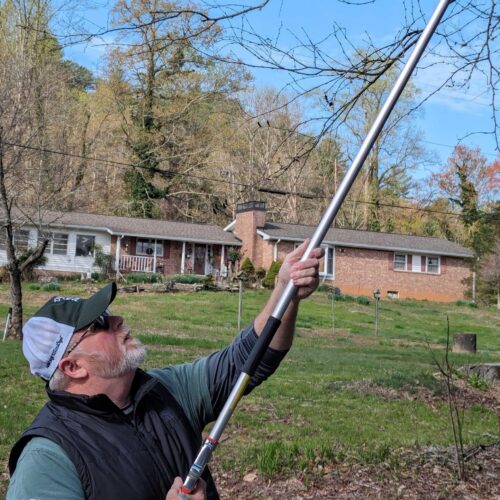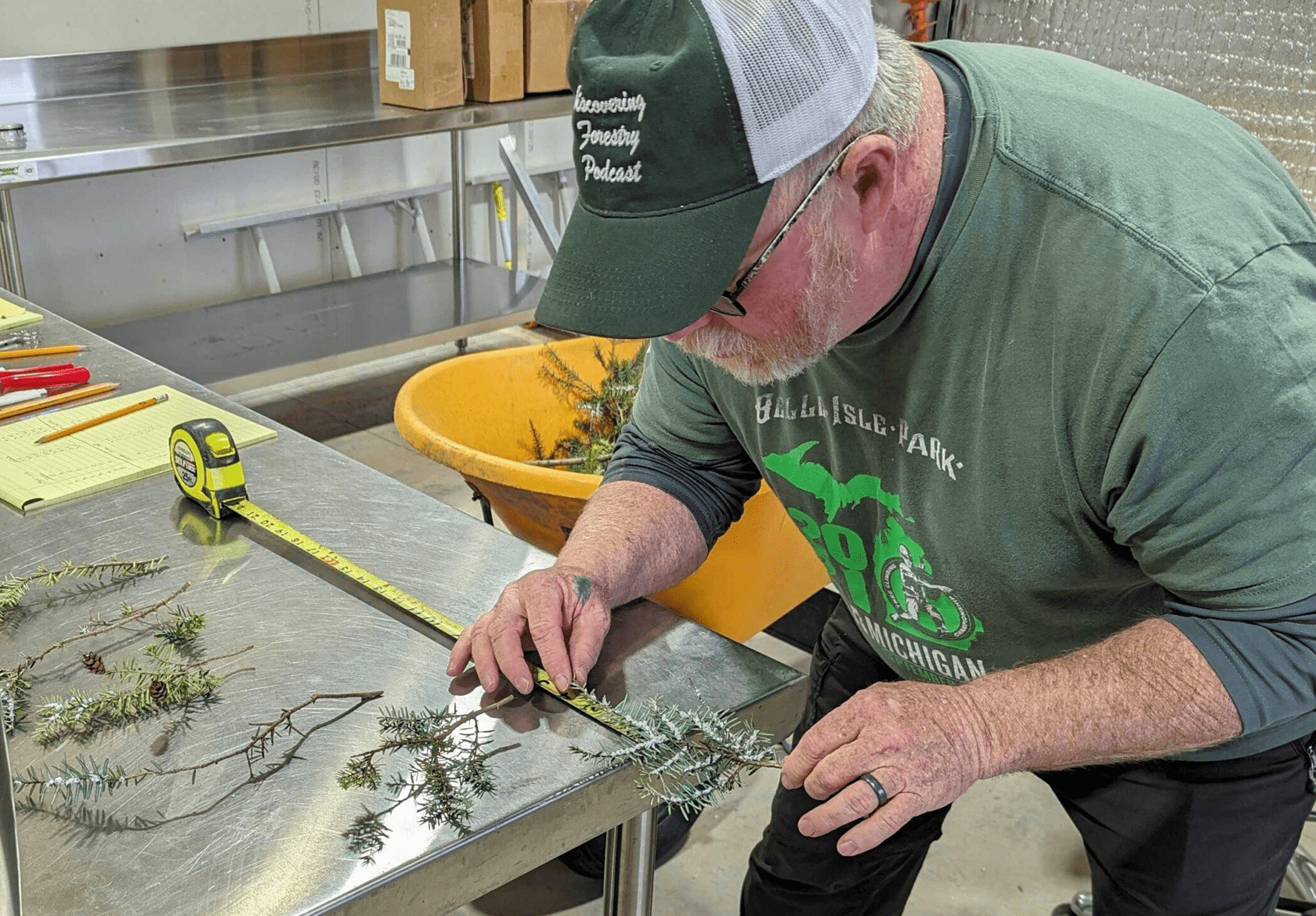I have written several blogs about systemic tree injection. The “why” behind injection is to protect trees from destructive pests. The most detrimental are pests that were recently and inadvertently introduced due to trade. The most egregious are spotted lanternfly (SLF), emerald ash borer (EAB), Asian long horned beetle (ALB), Japanese beetle (JB), spongy moth (SM), and hemlock woolly adelgid (HWA) to name a few. These insects fall into certain groups based on their feeding behavior; they either have chewing or piercing-sucking mouthparts. The suckers include SLF and HWA, while the chewers include EAB, ALB, JB and SM. EAB and ALB feed under the bark of trees and, accordingly, are very well protected from removal efforts. JB and SM feed on foliage externally and are designated as defoliating insect pests. The formulations used to control these pests include imidacloprid (IMA-jet) and emamectin benzoate (TREE-äge). In this installment, we’ll discuss treatments and follow-up evaluations to help monitor and ascertain the efficacy of a systemic treatment.
Application of Systemic Insecticides
Applications to trees (hardwoods and conifers) require an injection point at the base of the tree. A pilot hole is drilled into the active sapwood, which is the part of the tree that moves water and dissolved minerals. An Arborplug is inserted into the pilot hole as a backflow prevention device. It keeps the injected liquid chemistry in the tree and prevents exposure to the applicator and surrounding environment. The final step is to insert the injection needle and deliver a pre-determined dosage.



Hemlock Woolly Adelgid: A Case in Point
Hemlock woolly adelgid is an exotic pest introduced from Japan that has a very complex life cycle. It has two morphologically distinct generations per year. The most interesting trait of HWA is that it completes its lifecycle over the winter months and undergoes a summer aestivation (dormancy). When dormant, it is essentially inert, making it difficult to tell whether they are alive or dead. Did I mention HWA are microscopic? The first instar stages certainly are! The best way to conduct a diagnostic is to tease away the woolly mass where the adult female lives and look for the large clutch of eggs. This woolly mass is called an ovisac.
The other interesting characteristic of HWA is that the more you have (HWA per linear centimeter count), the less hemlock growth you have. This is termed a density-dependent feedback loop. The best time to evaluate systemic injection as a treatment for HWA is in the early spring, after sap flow re-commences.
Sampling for Diagnostics
We take branch samples (approximately 18 inches in length) from each tree quadrant for evaluation.

The branch samples are bundled and color-coded. In a recent study, we used white, double-white, blue, and red to identify the various treatments.
The Process of Evaluation
Next, the most recent three years of growth are measured in centimeters. Finally, using a dissecting microscope, the HWA ovisacs with live adelgid are tallied.Together, this data gives us the number of HWA per linear centimeter and the percentage of HWA mortality, which reflects treatment efficacy. How can we be sure of an effect? All treatments are compared to an untreated control!




In our next blog, we’ll take you through a raised bed build and shortcuts you can take to make it easy and effective!
~ Signing off for now, Joe

